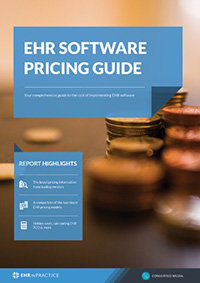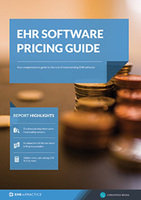The important features of EHR in HIPAA compliant medical billing
Although EHRs are a single piece of the entire HIPAA compliance equation, they offer essential features to ensure your medical billing processes are HIPAA compliant. Gone are the paper records that could be read by anyone who has access to the shelves holding the medical records. Technology allows practices to place safeguards into their EHR, thus ensuring HIPAA compliant medical billing.
Login details
Anyone using an EHR system must have a username and password. Depending on each employee’s job function, they will have different access right as well. A front-desk employee who enters registration information should have limited access to billing functions. A medical biller should have access to claim details, including denial and payment information, but do they need to know when a patient’s next appointment is? Practices need to determine which function each person needs access to and ensure their EHR is tailored as such.
Audit trails
Another EHR feature, the audit trail, further ensures that medical billing practices are HIPAA compliant. If a claim goes to the insurer, who denies the claim because it does not have a record for the patient, you can check the audit trail. The report shows who changed what and when. Understanding who added incorrect information and why can lead to better training, or, if the breach is serious, termination.
A great example is when a patient’s bill is sent to an incorrect address. You now have a HIPAA release, especially if the recipient opens the mail. Not only can you see who added the address, but, depending on the age of the system, you can see if the patient ever lived there.
Edits
Being able to edit claims is by far the most important HIPAA-compliant medical billing EHR feature. It protects practices from the beginning. If someone changes registration information that could affect a claim, the claim will go into an edit queue. A medical billing clerk can then review the information and determine whether the change was warranted or whether it was incorrect. Similarly, brand new claims, especially high dollar claims, will require an edit. Clerks can review things like date of service, provider name, patient details, and so on, to ensure everything is in order before they send the claim to the insurer. Just as insurance carriers expected claims to be correct before there were EHR systems, they expect claims to be correct the first time now. The EHR can help your practice make sure the first claim is the correct claim.
Secure printing
Sometimes a medical biller is working on several things at once. If they are on the phone while printing a claim and checking medical records, they can select a secure print option through the EHR. When they hang up, they can go to the printer, select their job and enter their password. Obviously, this requires a printer with the same capability, but the benefits outweigh the costs. Everyone has access to something lying on a printer. Secure printing enables practices to be HIPAA compliant for both billing and office procedures.
EHRs make HIPAA-compliant billing easier in many respects. With technology comes things like audit trails and edits, which were not possible with paper records and billing. Practices should consider what safeguards make sense for them. As always, practices should have a HIPAA compliance officer, who checks the processes often.
Free white paper

EHR Pricing Guide
Get your complete guide to EHR software pricing and project costs. Your headstart on EHR pricing research

Featured white papers
Related articles
-

Top requirements for medical billing
Key features to consider when selecting an EHR for medical billing
-

Medical billing software: how it takes the strain off your finance team
Three areas where medical billing software can make life easier for your finances team
-

4 Medical Billing Workflows Your EHR Should Support
From automated coding to payment tracking, discover the four areas where EHR medical billing work...



